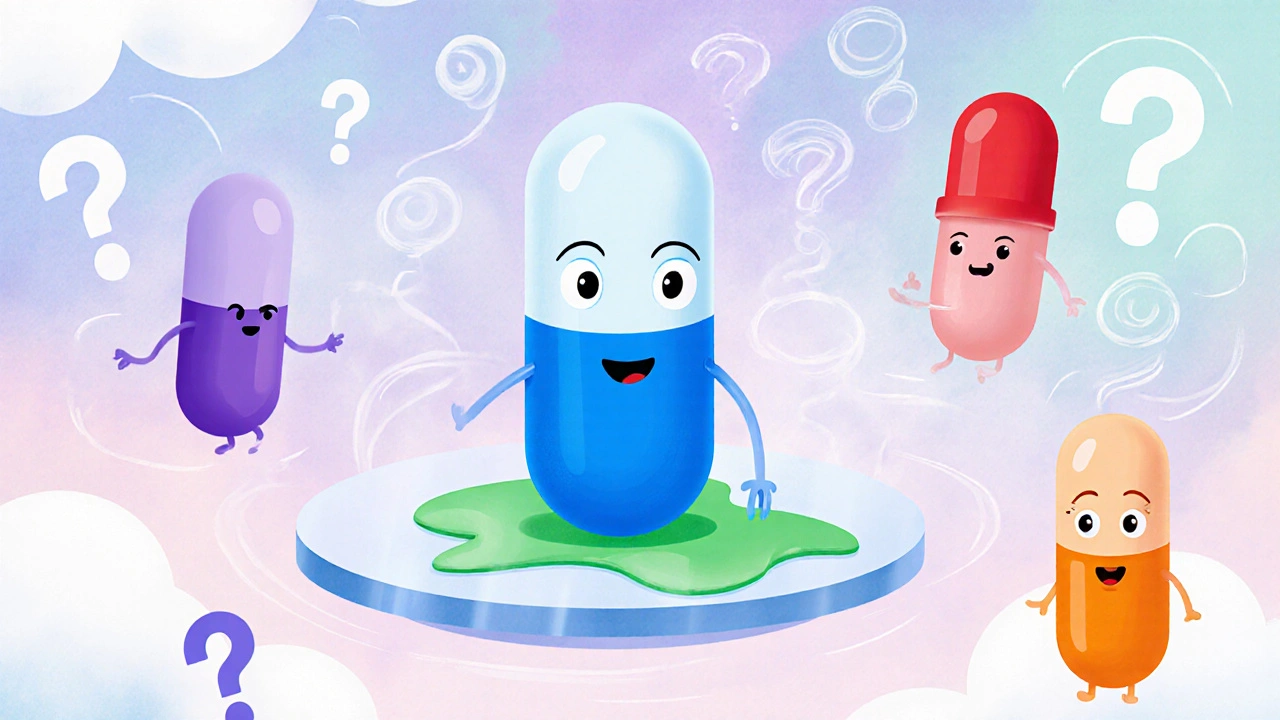Clonidine: Uses, Side Effects, and What You Need to Know
When working with Clonidine, a prescription drug that lowers blood pressure and helps with several other conditions. Also known as Catapres, it acts as an alpha‑2 adrenergic agonist, calming the nervous system. Hypertension (high blood pressure) is a chronic condition where blood pushes too hard against artery walls, and Clonidine is often used to bring those numbers down. It also finds a place in treating ADHD a disorder marked by inattention, hyperactivity, and impulsivity. Another key use is for Opioid withdrawal the set of symptoms that appear when opioid use stops, where it helps ease cravings and discomfort.
So, why does Clonidine work for Hypertension? The drug binds to alpha‑2 receptors in the brainstem, which reduces the release of norepinephrine. Less norepinephrine means the blood vessels relax, lowering the pressure against the artery walls. This simple mechanism makes it a good option when other blood pressure meds aren’t enough or cause side effects. Because it targets the nervous system, it also slows down the heart rate, which can be a double‑edged sword—great for high pressure but something to watch in people with bradycardia.
When it comes to ADHD, Clonidine offers a different benefit. Instead of boosting dopamine like stimulants, it calms the overactive sympathetic tone that can make focus tough. Many parents and doctors use it as an add‑on when stimulants cause insomnia or irritability. The typical dose starts low, often 0.05 mg at bedtime, and is gradually increased based on response and side‑effects. Kids may notice fewer daytime outbursts and better sleep, which together improve school performance.
For those battling opioid dependence, Clonidine becomes a handy ally during detox. It dampens the surge of sympathetic activity that triggers sweating, anxiety, and muscle aches. While it won’t eliminate cravings completely, it can make the early withdrawal days feel more tolerable. Doctors usually prescribe a 0.2‑0.4 mg dose every 4‑6 hours, then taper down over a week or two. Pairing it with counseling or medication‑assisted treatment maximizes the chance of staying clean.
Like any medication, Clonidine comes with a side‑effect checklist. The most common are dry mouth, drowsiness, and a drop in blood pressure that can cause dizziness or fainting, especially when you stand up quickly. Some people report constipation or a mild headache. Rare but serious reactions include severe hypotension, heart block, or allergic skin rashes. If you notice a rapid heartbeat, chest pain, or trouble breathing, seek medical help right away.
Interactions matter, too. Combining Clonidine with other blood‑pressure‑lowering drugs, sedatives, or certain antidepressants can amplify the drop in blood pressure. Alcohol has a similar effect, so moderation is key. Pregnant or nursing mothers should discuss risks with their doctor, as the drug crosses the placenta and appears in breast milk. Kids under six usually aren’t prescribed Clonidine unless a specialist recommends it.
Practical tips can make your Clonidine experience smoother. Take the pill at the same time each day, preferably with a full glass of water. If you’re on a nightly dose, set a reminder before bed so you don’t miss it. Monitor your blood pressure regularly, especially during the first few weeks. Keep a list of any new symptoms and share it with your healthcare provider during check‑ups. And remember, never stop Clonidine abruptly—it can cause a rebound surge in blood pressure. Tapering under doctor supervision is the safest way to discontinue.
With this overview, you’ve got a solid grounding in what Clonidine does, why it’s used, and how to manage it safely. Below you’ll find a curated collection of articles that dive deeper into specific scenarios, dosing guides, and real‑world tips to help you stay proactive about your health.
Clonidine vs Alternatives: A Practical Comparison Guide
A detailed guide comparing Clonidine with its most common alternatives, covering how they work, side effects, dosing, cost, and when each is best suited.
More
